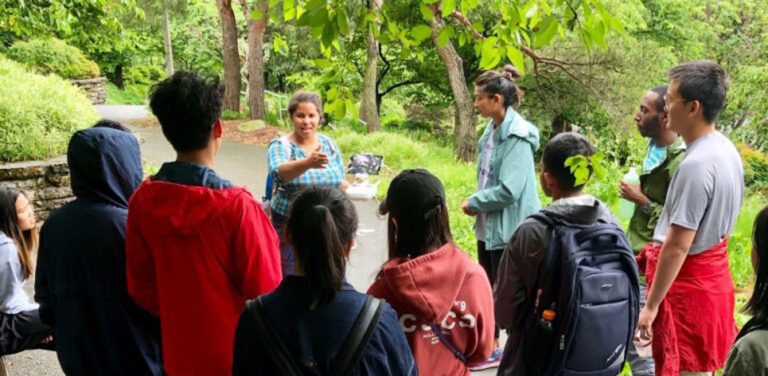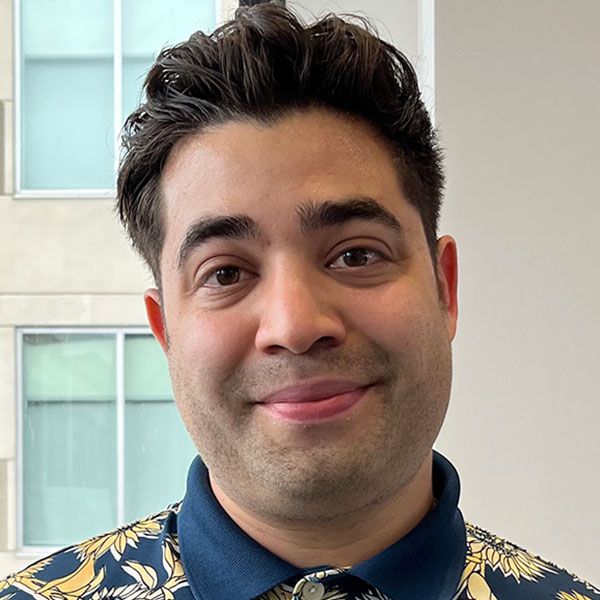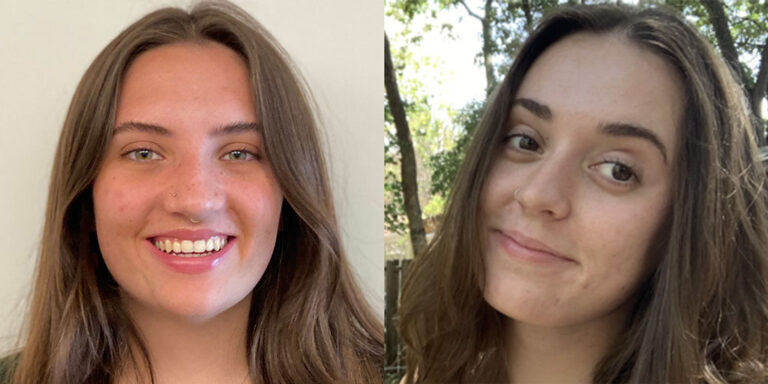The Serious Business of Public Communication
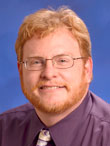
If you have not yet examined the AAG Long Range Plan, 2015-2025, then I encourage you to do so. It provides a useful update on the Association’s progress since its 2002 strategic plan and offers 20 specific recommendations important for the future of AAG and the discipline of geography. One of those recommendations calls on us to “promote outreach and engagement,” which includes encouraging and training AAG members to write and speak for general audiences to maximize the contributions of geography to public debates, policy initiatives, and the broader civic society.
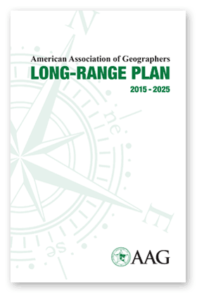
Many of my presidential columns over the coming year, including this one, will focus intently on offering some ideas on how geographers can further enhance their level of public engagement and outreach, communication savviness, and skills in advocacy and disciplinary promotion. Much of my time and energy will be spent developing an initiative I call “Geography is REAL” (Responsive, Engaged, Advocating, and Life-Improving). With the approval and help of the AAG Council, I hope this initiative will yield concrete programmatic results.
The purpose of REAL is to create and open spaces within our discipline to demonstrate the larger public value of a geographic perspective to a wider world. Making Geography REAL is also about supporting geographers as they move beyond simply analyzing issues and problems to making informed and ethical interventions in how public groups understand, debate, and act on those problems.
An important part of any effort to enhance the engagement and outreach focus of our discipline must address the centrality of public communication within the scientific process and its importance to the health of geography as a discipline competing for resources, practitioners, policy position, media recognition, and simply respect. The purpose of this column is to characterize public communication as “serious business,” meaning that the consequences of effective or poor communication should not be taken lightly. Moreover, writing and speaking to wider publics is indeed work and it requires strategies. The AAG can play a key role in training members in these strategies while also carrying out its own impressive communication efforts with social media, SmartBriefs, and the new Data Dashboard. I conclude this column with some specific suggestions to help start this process.
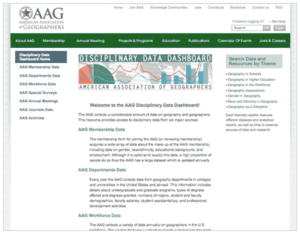
Before moving on, allow me to make an important point. I emphasize “publics” as plural, recognizing there are a vast number of community groups, governmental agencies, educational institutions, media outlets, non-profits, and private firms within which the work and perspectives of geographers can and do make a difference. The public is most assuredly our colleagues and students in the academy and our co-workers in the industry workplace, but I am especially mindful about engaging non-academic communities who are often unhelpfully lumped together as “the general public.”
While the AAG long-range plan is correct in arguing that “[g]eographic scholarship is increasingly influential beyond academia” (p. 13), there remains a great need to elevate and clarify geography’s wider public identity and to communicate more effectively and broadly the case for geography as a transformative and uniquely integrative field. At grocery store checkout lines, at my local bar, and even at family reunions, I find ordinary, everyday people blissfully unaware of what geographers do and what they bring to addressing social and environmental issues and problems. As my colleague Josh Inwood (at Pennsylvania State University) is known to say in working with public groups: “Geography is the most important thing that most people have never thought about.”
Public Communication as Matter of Science and Survival
Pubic communication is not something that comes easily or naturally to everyone, and individual scholars and academic programs have not traditionally prioritized it. Many of us have viewed efforts to engage and communicate with public groups as simply a matter of marketing or service rather than the “real” work of scientists. The process of translating and disseminating one’s scholarship to popular audiences is actually an important form of scientific work. Public communication is central to scientific process because it legitimizes the social relevance and broader implications of the science. Good science, in my view, does not stop at the publication of a journal article or book chapter, but seeks to make those findings understandable, relatable, and useful to a larger world.
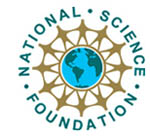
Has science ever been about just the work in the laboratory, in the field, or in the archives? Very seldom do we carry out science merely for the purposes of testing hypotheses, formulating new social theory, or mapping change across the landscape. We undertake our scholarship to affect change, whether that means changing the conversation about a scientific issue, often of public importance, or going as far as resisting what we see an injustice within society. Demonstrating the broader impact of research is a now an established evaluation criteria for grant proposals submitted to funding agencies such as the NSF. Offices of research and deans at universities now employ communication staff who work with faculty and students to promote public understanding and appreciation of scholarship. Such outreach efforts are essential when we recognize that many lay communities are not reading research papers—even if they could get behind the paywall of publishers.
Higher education increasingly faces questions about its relevance, particularly in these disruptive times of tightening budgets, program elimination, and increased public hostility toward universities. This has further raised pressure to improve communication outside the academy. Our discipline has a vulnerable position at some of these institutions. Moreover, geography is not a major selected by students right when they enter college and geography curriculum has been weakened in many state public school systems in the US. It is imperative that geographers help direct what public groups hear and know about our discipline rather leaving it to chance or to non-geographers. Greater public communication from and about geography is critical for our discipline to thrive if not simply to sustain itself. A more communicative geography is not necessarily about political activism, although it can be. Yet, effective communication of evidence-based and theoretically informed scholarship is a key tool in challenging the current “post-truth” environment.
Public Communication Not Same as Academic Communication
A growing number of organizations recognize the great value of publicizing scientific results and perspectives, but they also realize that many scholars are poorly prepared to engage and communicate outside of their academic cultures. These organizations have established programs and resources to help train faculty, students, and other professional researchers. For example, Compass, which recently led a workshop for department heads/chairs at the 2017 AAG meeting in Boston, helps researchers refine their messages to be meaningful to non-scientists while also connecting scientists to journalists, policy-makers, and other audiences. The Alan Alda Center for Communicating Science hosts media training and improvisation workshops for scientists. It, like Compass, stresses the importance of scholars moving beyond the dry presentations of data to tell great, evocative stories about themselves and their work. Both organizations will tell you that this story-telling draws upon skills not a part of a traditional college curriculum.
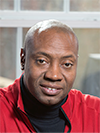
University of Georgia’s Marshall Shepherd, former President of the American Meteorological Society and a past recipient of the AAG Media Achievement Award, has an envious career built upon not only important basic research but also the translation of his work and passion for atmospheric science to large segments of the American public. In a 2016 Forbes column, Marshall offers nine helpful tips for communicating science to non-scientists. His tips are an effective primer for geographers thinking of taking their work and perspectives more public. He emphasizes the importance of offering non-scientists a concise and jargon-free message that is not generic but tailored to one’s audience. As he writes: “Scientists need to work hard to make their message memorable, meaningful, and miniature.”
Of special note is Marshall’s point that researchers and public audiences have inherently different styles of communication. While scholars frequently present considerable amounts of background information and theory before delivering results, the public and policymaker need and expect key findings to be provided early on and in a straight-forward fashion.
Although it might seem counter-intuitive, effective engagement and communication with wider publics requires us to be good listeners as well as compelling speakers. To carry out a wider communication of science simply for the sake of self-promotion without allowing ourselves to be enriched by the experiences and knowledges of non-academics is a lost opportunity to generate the mutual benefit that is the backbone of public engagement. Finally, it is critical that these moments of public communication be made into moments of disciplinary advocacy in which we clearly identify ourselves as geographers and speak directly to why our field matters in today’s world. I would encourage you to be good stewards of not just your sub-field but the whole of geography.
I am interested in knowing how AAG members are engaging in public communication and outreach. Please share your thoughts and experiences by emailing me (dalderma [at] utk [dot] edu) or share on Twitter #PresidentAAG.
— Derek Alderman
University of Tennessee
Twitter: @MLKStreet
